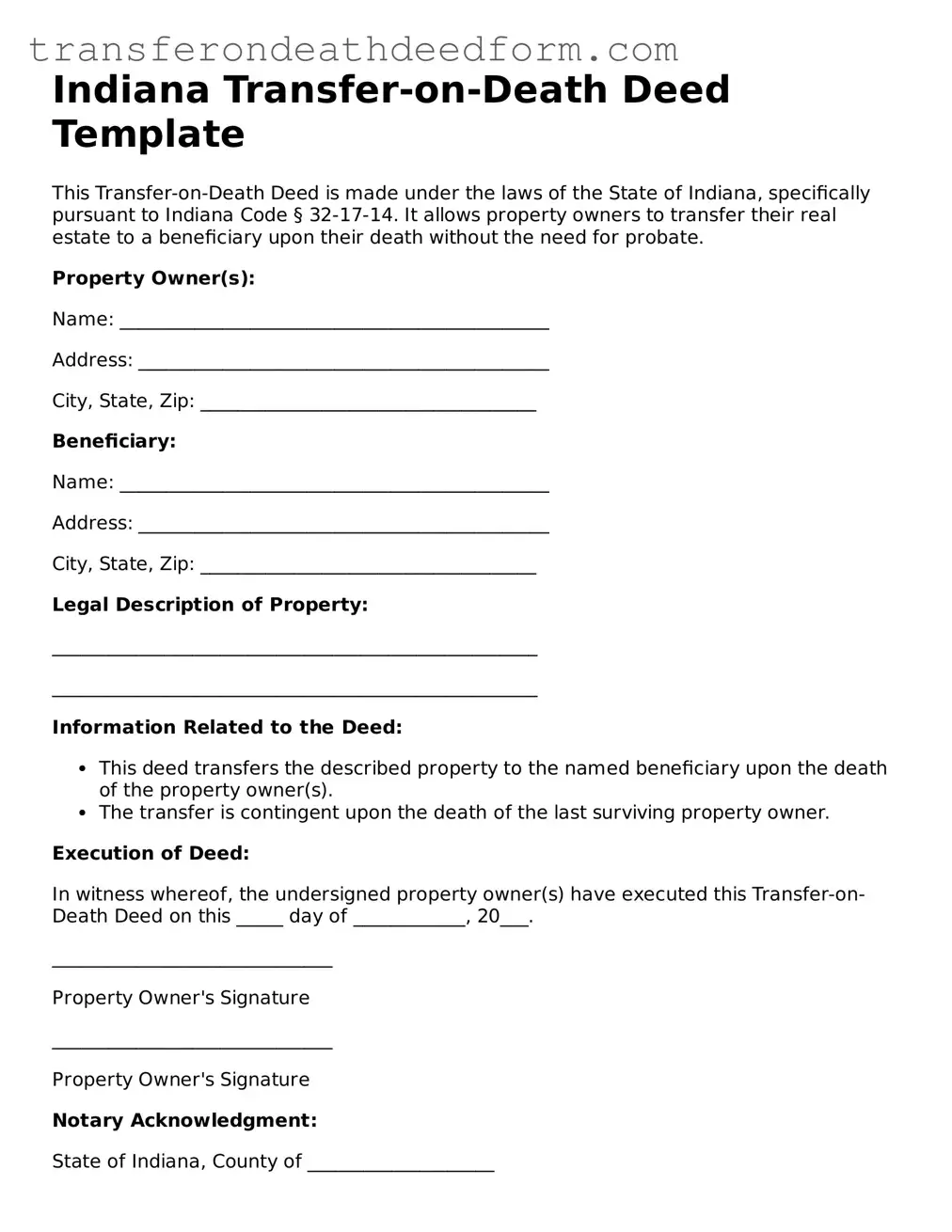Indiana Transfer-on-Death Deed Template
This Transfer-on-Death Deed is made under the laws of the State of Indiana, specifically pursuant to Indiana Code § 32-17-14. It allows property owners to transfer their real estate to a beneficiary upon their death without the need for probate.
Property Owner(s):
Name: ______________________________________________
Address: ____________________________________________
City, State, Zip: ____________________________________
Beneficiary:
Name: ______________________________________________
Address: ____________________________________________
City, State, Zip: ____________________________________
Legal Description of Property:
____________________________________________________
____________________________________________________
Information Related to the Deed:
- This deed transfers the described property to the named beneficiary upon the death of the property owner(s).
- The transfer is contingent upon the death of the last surviving property owner.
Execution of Deed:
In witness whereof, the undersigned property owner(s) have executed this Transfer-on-Death Deed on this _____ day of ____________, 20___.
______________________________
Property Owner's Signature
______________________________
Property Owner's Signature
Notary Acknowledgment:
State of Indiana, County of ____________________
Subscribed and sworn to before me this _____ day of ____________, 20___.
_______________________________
Notary Public Signature
My commission expires: ________________
